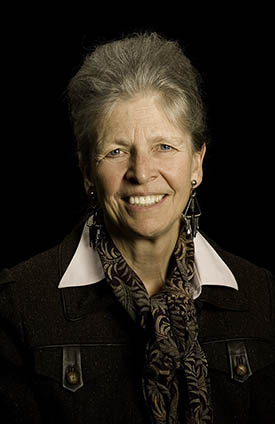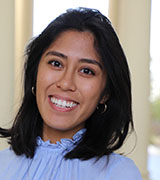Joan Steitz’s WALS Lecture on Viral Noncoding RNAs
Taking RNA from Historic Origins to Modernity
Joan Steitz leads and inspires by example, with her infectious passion for all things RNA. As a young college student, she had seen female medical doctors but never a female professor heading a lab. Originally set on medical school, she did not anticipate building a career as a woman molecular biologist.
Her interest in molecular biology began in the 1960s when she was a work-study intern in Alex Rich’s laboratory at the Massachusetts Institute of Technology (MIT, in Cambridge, Massachusetts). Rich, who played an important role in the discovery of nucleic acid hybridization, had worked with Nobel laureate Francis Crick to solve the structure of collagen.

Yale professor Joan Steitz delivered a virtual WALS lecture on “Viral Noncoding RNAs: Approaching Answers.”
Steitz earned her undergraduate degree in chemistry in 1963 (from Antioch College in Yellow Springs, Ohio) and then went on to train with two Nobel laureates herself—Crick and James Watson, who together had first described the DNA double-helix structure in 1953 and won the Nobel Prize in Physiology or Medicine in 1962. She was the first female graduate student to join Watson’s lab at Harvard University (Cambridge, Massachusetts) and completed a Ph.D. in biochemistry and molecular biology, focusing on bacteriophage RNA, in 1967. Her postdoctoral training in cell biology was with Crick at the Medical Research Council Laboratory of Molecular Biology in Cambridge, England.
Incidentally, both Rich and Watson had NIH ties: Rich had worked as a section chief in physical chemistry at NIH (1954–1958) before becoming a professor at MIT, and Watson was the first director of the National Center for Human Genome Research (1989–1992), which became the National Human Genome Research Institute in 1997.
Steitz joined the faculty of Yale University (New Haven, Connecticut) in 1970 and has since become a prominent molecular biologist, research pioneer, and leader in the RNA field. Today, she is a Howard Hughes Medical Institute Investigator and the Sterling Professor of Molecular Biophysics and Biochemistry at Yale. She’s won numerous awards including the 2018 Lasker-Koshland Special Achievement Award in Medical Science “for four decades of leadership in biomedical sciences—exemplified by pioneering discoveries in RNA biology, generous mentorship of budding scientists, and vigorous and passionate support of women in science.”
Shift in exploring questions: Fifteen years after the discovery of the DNA double-stranded helix, many believed the sun was setting on the golden age of molecular biology. The fundamentals had been established through work on bacteriophages, a type of virus that infects bacteria. Scientists assumed they understood DNA replication, transcription (when DNA is copied to messenger RNA, mRNA), and translation (when mRNA directs protein synthesis). Steitz’s work has been part of the shift toward exploring questions from the perspective of mammalian cells. She is currently interested in understanding the biogenesis, mechanisms, and function of nuclear RNA viruses.
Steitz has been studying RNA since the field’s nascency in the 1960s and has loved seeing the developments and exciting questions answered since. “The RNA field did not exist, and [I] was privileged enough to be one of the committee of people who established the RNA Society,” said Steitz. The society had its beginnings in 1974 when a group of scientists studying RNA processing first met at Brookhaven National Laboratory (Upton, New York) and began holding annual meetings at Cold Spring Harbor (Huntington, New York) in 1982. The RNA Society was officially founded in 1993, with Steitz as its first vice president and president-elect.
During her career, she has contributed to the monumental advancement of the RNA field through multiple discoveries, notably of the sites, sequences, and mechanisms for mRNA binding to ribosomes and of single-nucleotide ribonucleic proteins and their role in splicing systems. From this basic RNA research comes exciting and tangible payoffs in medicine because 60% of genetic diseases have splicing-system defects. An example she cited is spinal muscular atrophy, a genetic neuromuscular disease characterized by muscle atrophy and weakness.
WALS lecture: On September 23, 2020, Steitz’s virtual lecture about her research on viral noncoding RNAs (ncRNAs) launched the 2020–2021 season of the Wednesday Afternoon Lecture Series (WALS). She explained that ncRNAs play critical roles in the regulation of gene expression but also have a variety of other functions. Her focus has been on gamma-herpesviruses such as Kaposi sarcoma-associated herpesvirus (KSHV, the cause of the most common cancer afflicting AIDS patients), Epstein-Barr virus (which can cause mononucleosis), and others. Her investigations of polyadenylated nuclear (PAN) RNA, which is present in cells infected by KSHV, has led to a new realization that it contains an RNA element (called the element for nuclear expression, or ENE) that’s needed for the nuclear accumulation of RNA transcripts.
Through the PAN RNA research, her group discovered that ENE elements prevent the degradation and decay of PAN RNA by engaging the end section called the polyA tail. One of Steitz’s postdocs later determined that the structure forming the RNA was the longest stretch of triple helix ever documented in RNA. Steitz told the story of how three NIH investigators—Gary Felsenfeld, David Davies, and her mentor, Rich—predicted exactly this structure…back in 1957.
Steitz believes that further structural and molecular understanding of RNA will be critical in the field’s future of elucidating RNA’s diverse functions. With her pioneering RNA work, she has enthusiastically forged paths forward for new scientific discoveries, medical contributions, and women in science.
To watch a videocast (HHS only) of Joan Steitz’s WALS talk “Viral Noncoding RNAs: Approaching Answers,” go to https://videocast.nih.gov/watch=38678.

Frances Fernando came to NIH as a postbaccalaureate fellow in the Division of Intramural Population Health Research (Eunice Kennedy Shriver National Institute of Child Health and Human Development) in 2019. After completing her NIH training in 2021, she plans to pursue a doctorate in public health to work on integrative global health issues and human rights. Outside of work, she gardens and explores Washington, D.C., by bike.
This page was last updated on Monday, March 21, 2022
